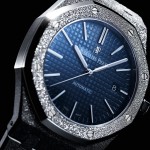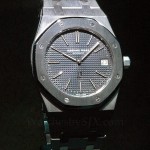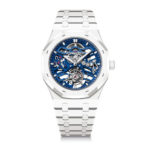Audemars Piguet Returns to Forged Carbon with the Royal Oak Concept Split-Seconds
Coloured, luminous carbon composite.
Having pioneered the use of carbon-fibre reinforced polymer for watches cases with the Royal Oak Offshore Alinghi Team of 2007, Audemars Piguet (AP) is returning with a new generation of the material that debuts in the Royal Oak Concept Split-Seconds Chronograph GMT.
Based on the original model in old-school titanium, the new split-seconds chronograph has a carbon composite case made using Chroma Forged Technology (CFT) that allows for greater colour and patterning in the material. As a result, the CFT carbon case has the typical marbled appearance of carbon composite, but flecked with blue veins that glow in the dark.
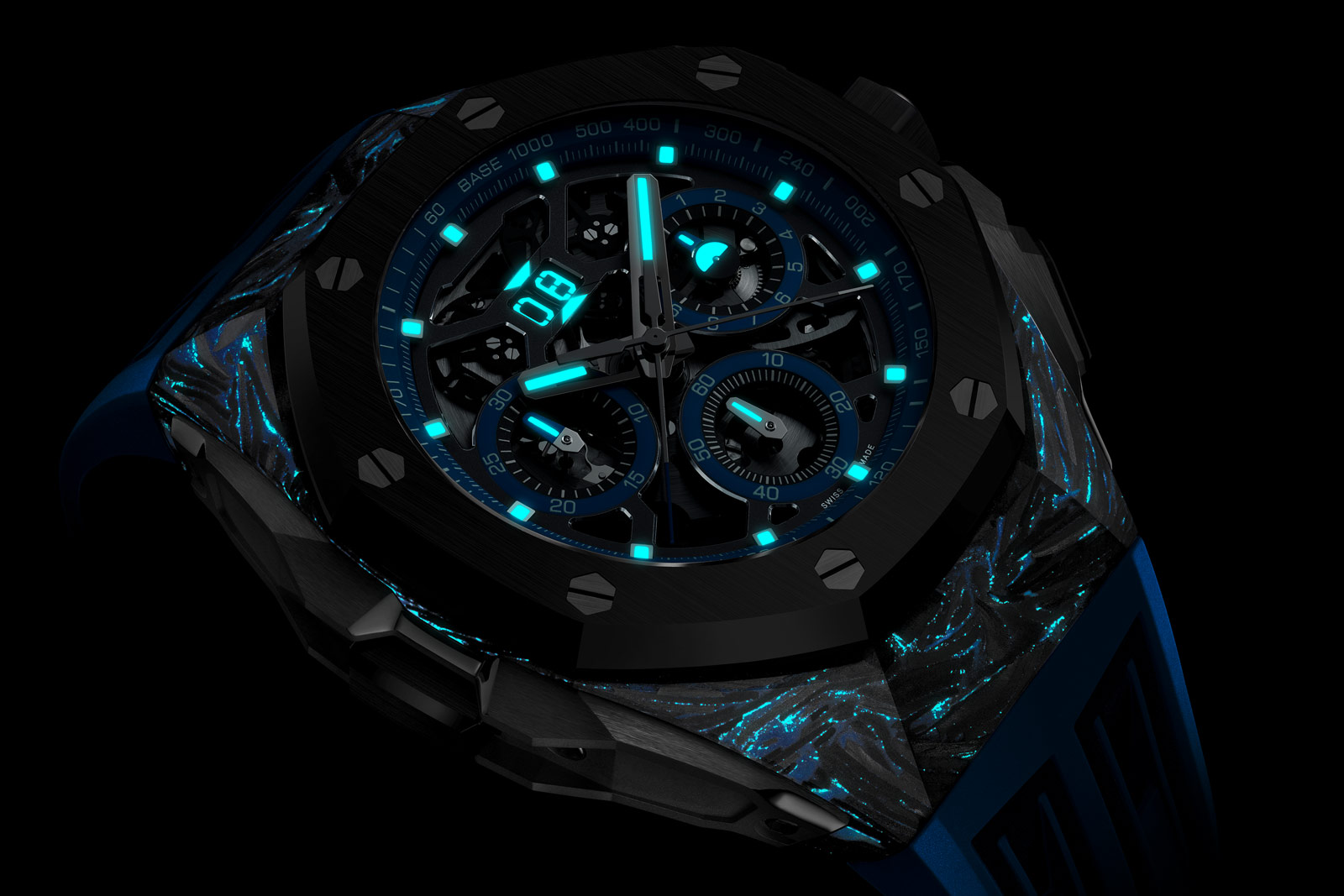
Initial thoughts
The Royal Oak Concept Split-Seconds Chronograph GMT might seem like yet another variant of AP’s popular model, but it is equipped with one of the brand’s latest movements, the cal. 4407. The movement boasts a modern, sophisticated construction, along with one of the most innovative implementations of the split-seconds mechanism in modern watchmaking.
The CFT carbon case dresses up the movement in more eye-catching attire, especially for those who found the first version in titanium too conventional. Although the new split-seconds only includes blue as an accent, the range of colours is essentially limitless since CFT carbon can be coloured in myriad hues. That means more colour variations are surely in the pipeline.
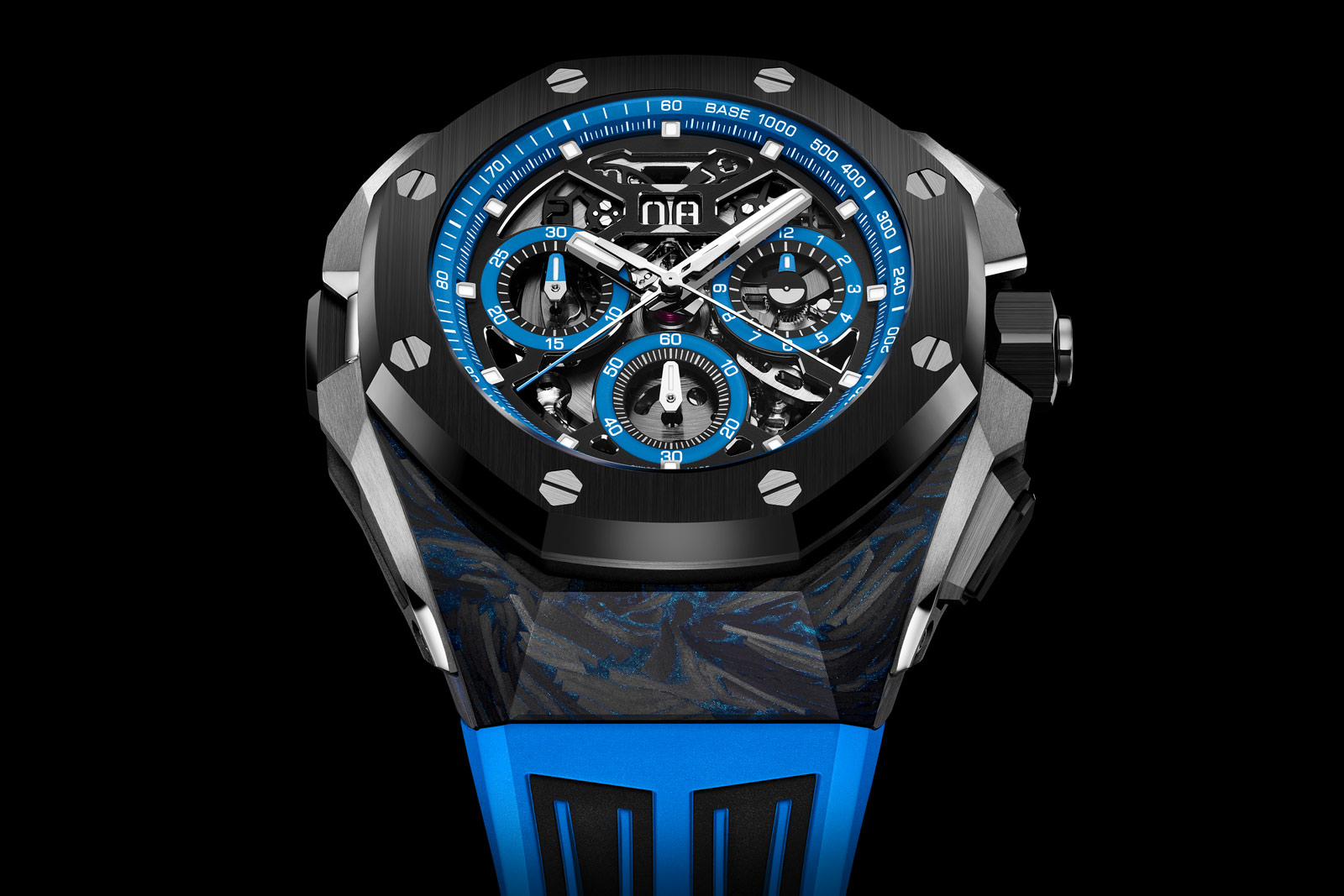
Though novel for AP, coloured or luminous carbon composite is not a new concept since the material been used for watch cases for several years now, even in affordable timepieces. So AP isn’t a pioneer with the material per se, but CFT carbon is no doubt higher quality than similar-looking materials in less expensive watches. AP has also patented the CFT manufacturing process.
More broadly, the material makes sense for the Royal Oak, since the line has historically been a proving ground for new materials. It also works well with the high-tech styling of the Royal Oak Concept, which is also large, making a lightweight case material ideal.

The first version launched last year had a titanium case
Coloured forged carbon
CFT carbon is fundamentally identical to conventional carbon composite, which AP terms forged carbon. It’s a mix of carbon fibre within polymer, creating a material that’s light and strong.
The specifics of the CFT process, however, are patented and unique to AP. The material starts with small pieces of carbon fibre that have been dyed, for this model in blue, but with any other colour possible as well. The pieces are then placed into a mould and arranged by hand, since their positions dictate the surface patterning of the finished material. Liquid resin is then poured into the mould.
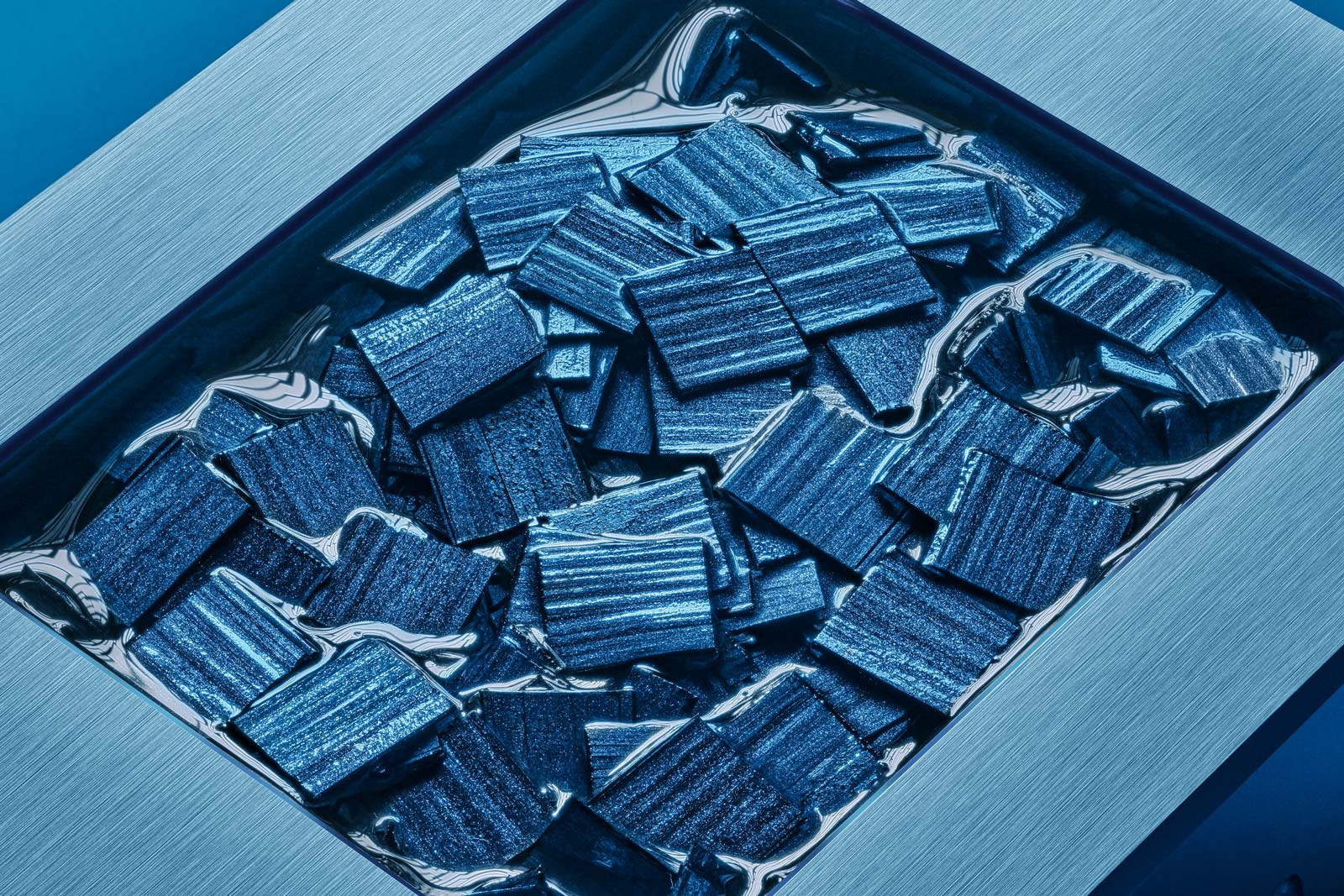
The pieces of carbon fibre dyed blue in clear resin before baking
This process is done one layer at a time layer, slowing filling up the mould. Once full, the mould is then compress to squeeze out any air bubbles and then placed in an autoclave, essentially an industrial oven that bakes at high temperature and pressure. After ten hours in the oven, the result is a solid block of CFT carbon composite that can then be milled to form the case, which takes another six to eight hours.
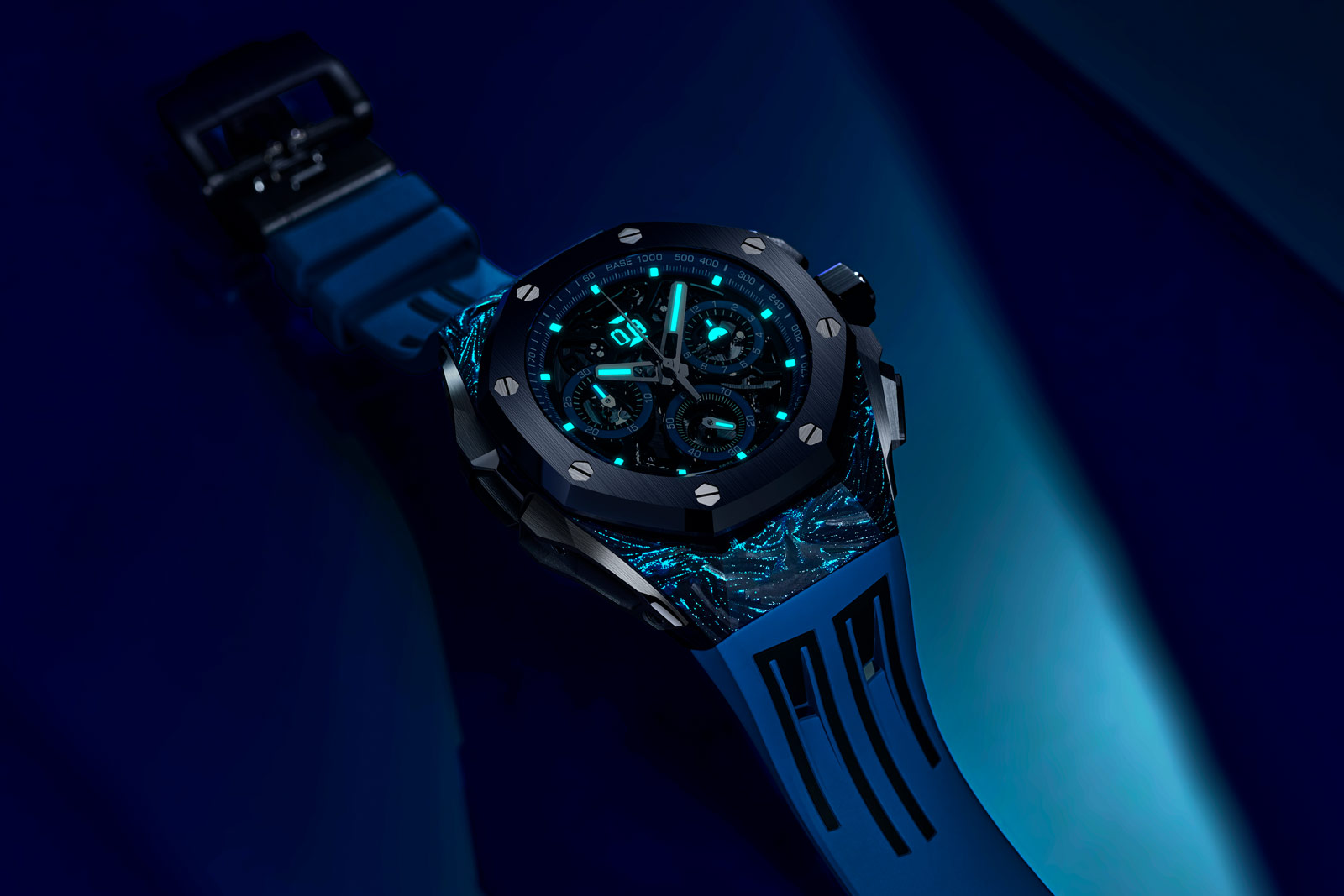
CFT is AP’s first coloured forged carbon, a material that has superior resistance to humidity, heat, and shocks according to the brand.
Here it’s matched with a black ceramic for the bezel, crown, pushers, and case back, while the guards and inserts on the flanks of the case are titanium. The ceramic parts are finished in typical Royal Oak fashion, sporting a combination of satin and mirror-polished surfaces, while the titanium flanks are sandblasted.
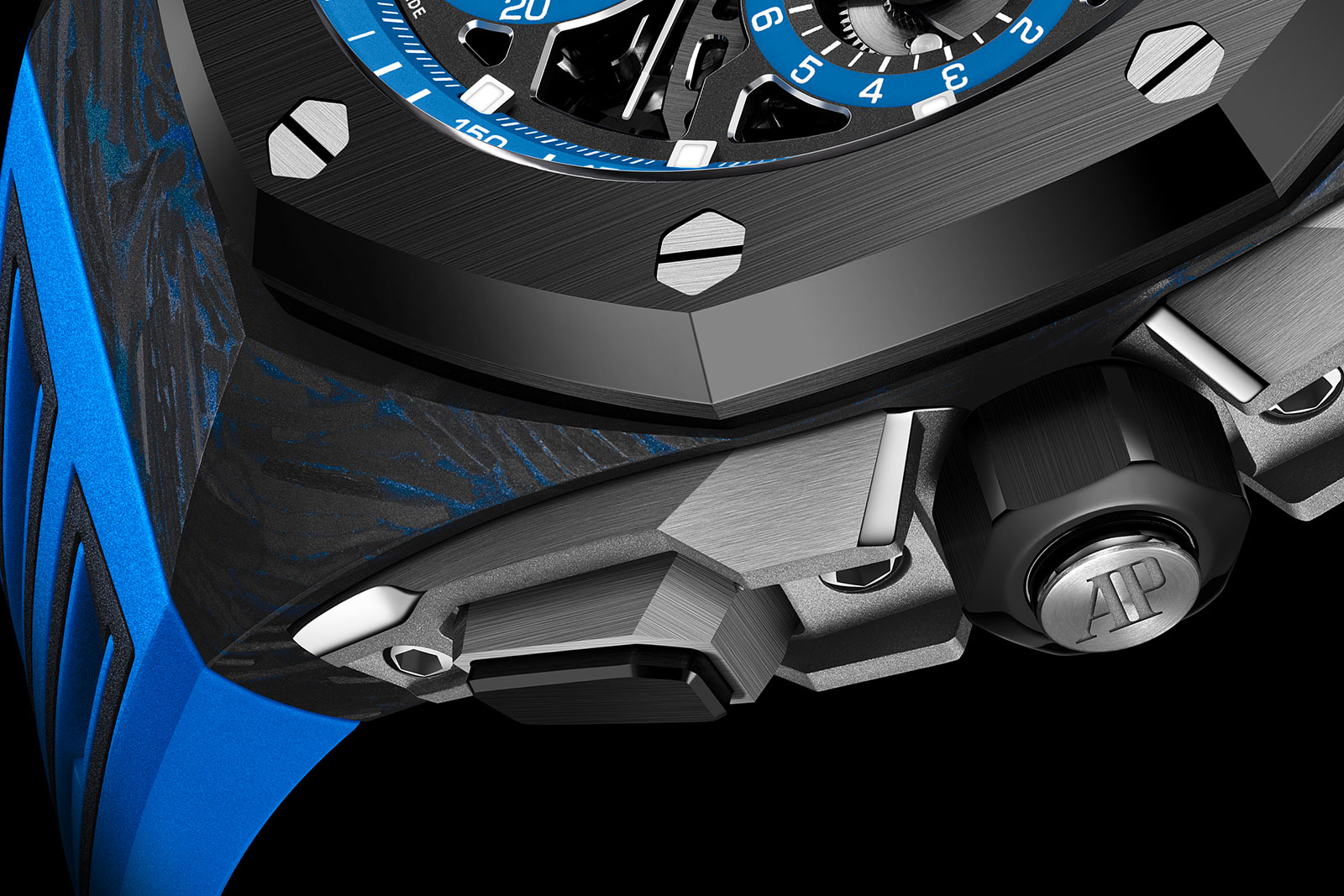
While the material is new, the CFT carbon split-seconds retains the dimensions and designs of the earlier version, 43 mm in diameter and 17.4 mm in thickness, as well as a 50m water resistance rating.
Featuring a large date just below 12 o’clock, the open-worked dial has the chapter rings for the tachymeter scale and counters in blue to match the CFT carbon case. The blue chapter rings stand out against with the grey and black tones of the movement bridges, which partially reveal the chronograph and date mechanisms below the dial.
The counter at three o’clock is the GMT display with a pointer to indicate the hours of a second time zone, along with a round day and night indicator on the hub of the pointer. This can be adjusted with the coaxial pusher on the crown.
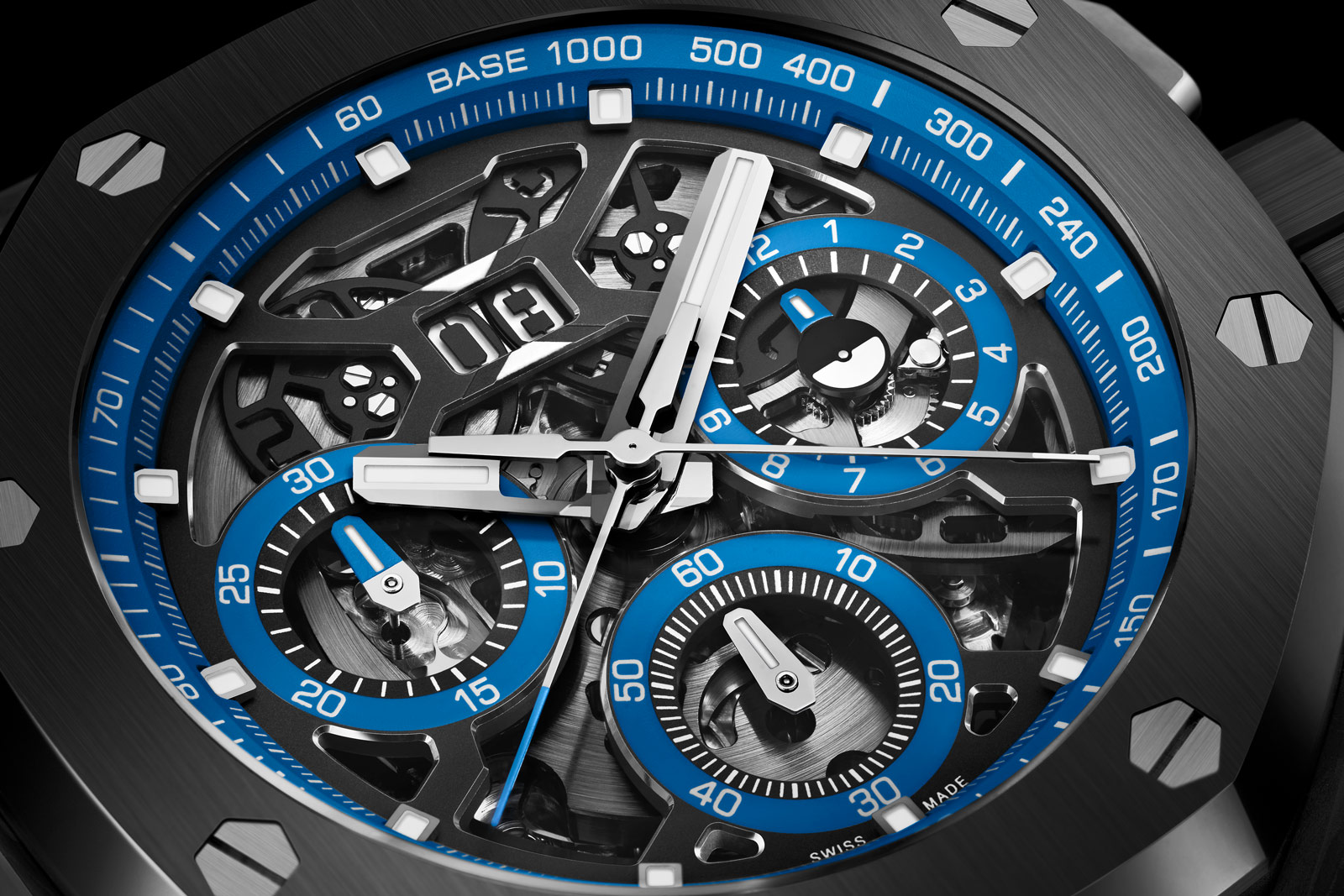
Rightly described by AP as “a feat of mechanical engineering” the cal. 4407 combines a flyback chronograph with split-seconds, GMT, and a large date. The movement offers 70 hours of power reserve and beats at 28,800 beats per hour (4 Hz).
The chronograph features a column wheel and vertical clutch, and also boasts a patented zero-reset mechanism that guarantees that the chronograph and the split seconds hand instantly and simultaneously reset to zero, thanks to a one-piece reset hammer.
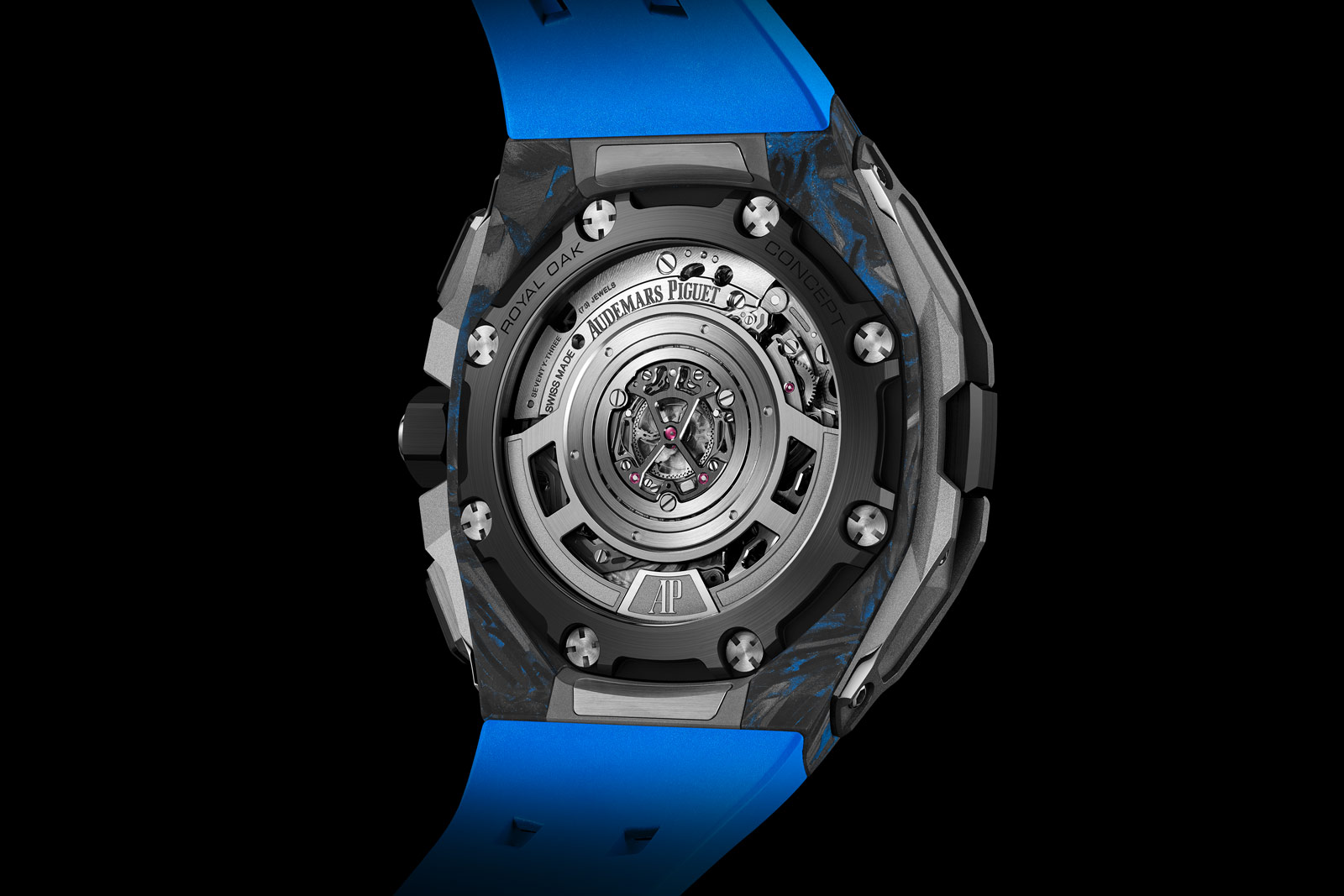
But the most ingenious feature of the movement is the split-seconds mechanism that is mounted within the hub of the rotor. This not only makes the watch thinner, but allows the split-seconds to be mounted on the rear of the watch, instead of concealing it beneath the dial as is typically the case for self-winding split-seconds chronographs.
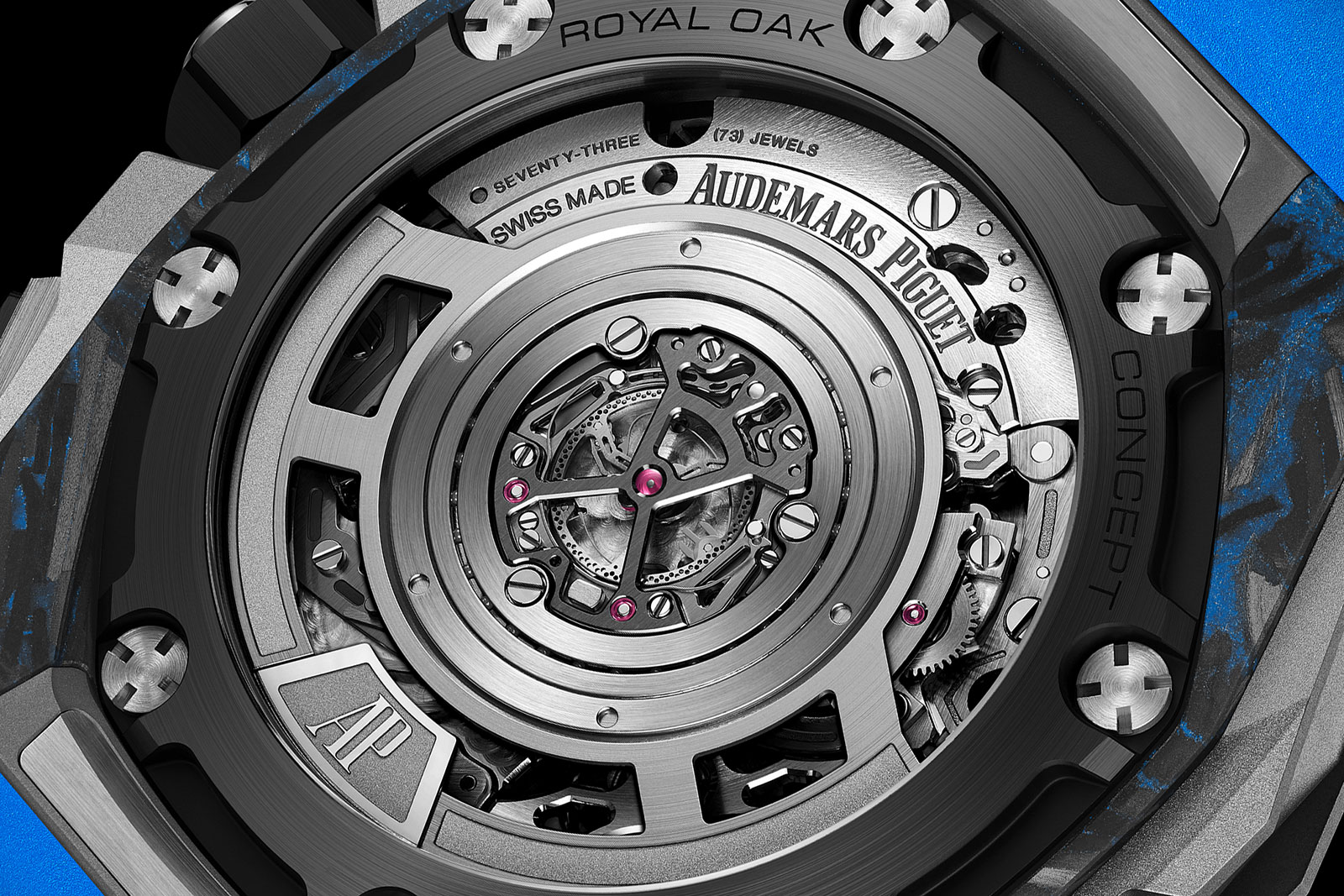
Key facts and price
Audemars Piguet Royal Oak Concept Split-Seconds Chronograph GMT Date
Ref. 26650FO.OO.D353CA.01
Diameter: 43 mm
Height: 17.4 mm
Material: Coloured forged carbon, black ceramic, and titanium
Crystal: Sapphire
Water resistance: 50 m
Movement: Cal. 4407
Functions: Hours, minutes, seconds, GMT, big date, and split seconds chronograph with flyback
Winding: Automatic
Frequency: 28,800 beats per hour (4 Hz)
Power reserve: 70 hours
Strap: Two rubber straps with titanium folding clasp
Limited edition: No
Availability: At AP boutiques and AP Houses
Price: Approximately CHF200,000
For more, visit Audemarspiguet.com.
Back to top.

